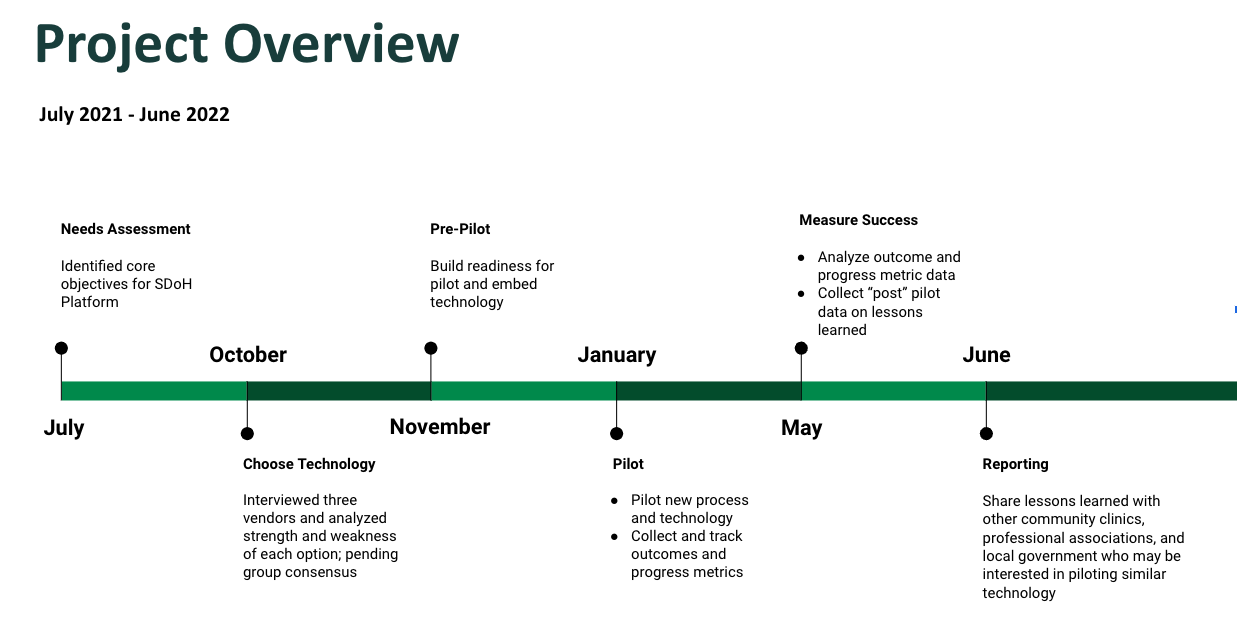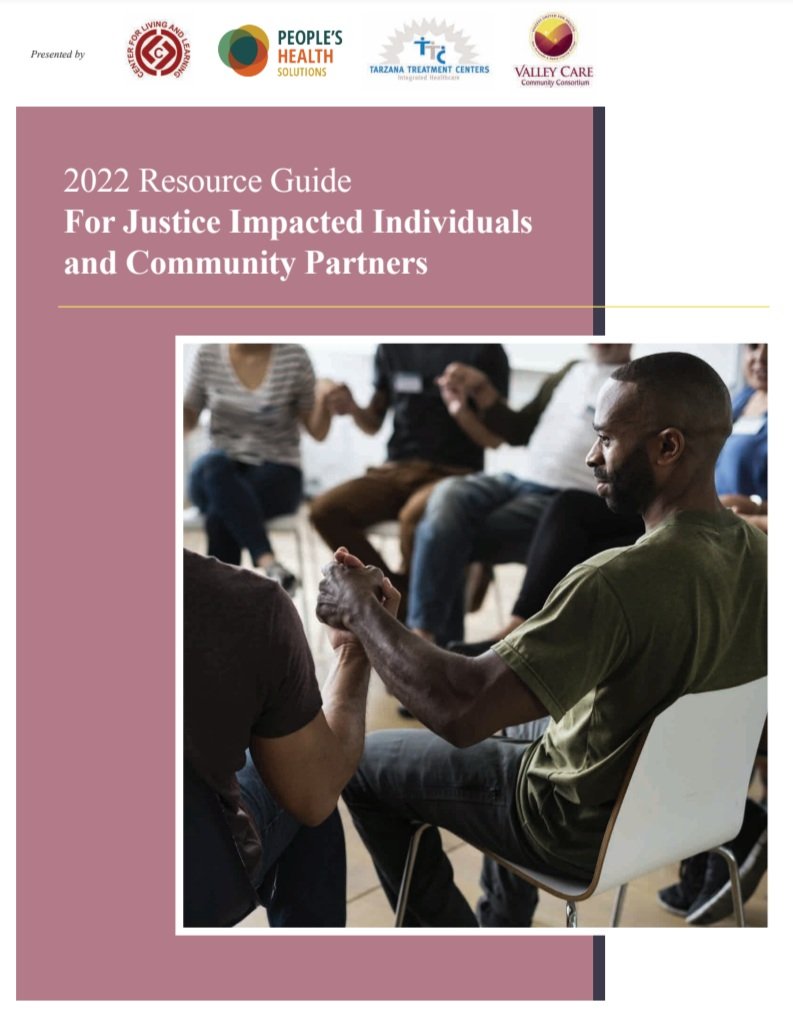Project Healing: A Social Determinants of Health Platform for Justice-Involved Persons
For people who have experienced incarceration, transition back into the community is a critical time. What would it look like for a group of community-based organizations and health service providers to come together to help people navigate this transition? And use a social determinants of health (SDoH) platform to collaborate?
Project Healing partners, Valley Care Community Consortium, Tarzana Treatment Center, and Center for Living and Learning, sought to improve care coordination for their clients by using a SDoH platform to support referral and communication. While the pilot was community-led, the providers partnered with PHS, who served as a process facilitator.
PHS designed and facilitated a six-phase process for choosing and piloting a SDoH platform.
The Needs Assessment phase identified core objectives for SDoH platform through a series of key informant interviews with program supervisors and three focus groups with diverse cross-sections of staff at all three partner organizations.
The partner organizations identified the following objectives:
Secure, encrypted, HIPAA-compliant referral system
Achieve a more “360-degree view”
“Master system” for “one-stop-shopping”
Facilitate warm hand-offs for transitional housing and health and mental health services
Does not require client access to mobile/computer technology
Modest cost and time required for upkeep
The Choosing Technology phase allowed our clients to explore various SDoH platforms to choose from. PHS interviewed three SDoH platform companies and summarized findings to present to the clients. Based on the information provided, the clients chose Unite Us as their common SDoH platform to coordinate services for their justice-involved clients.
During the Pre-Pilot phase, PHS guided the partners through the account setup and workflow review to make sure that the platform could perform its function across all three organizations. PHS also developed a customized manual for the clients to communicate and make referrals within the platform. Once the Pilot phase concluded, PHS conducted a series of post-pilot interviews and reviewed referral data from Unite Us to measure success. PHS presented a summary of project phases, challenges, and lessons learned in a case study for the clients.
Adoption of the SDoH platform was considered a success for all three partners. It removed barriers to inter-agency communication and provided a fuller picture of their client needs. The platform also expanded partners’ reach by connecting them to new resources. Project Healing helped introduce senior management to SDoH platforms, and it accelerated adoption through the technology vetting process. Opportunities to test out a SDoH platform and access the resource database free-of-charge were described as strong incentives to be involved in the project.
The project demonstrated that it is important to have a champion who helped work through bottlenecks, including balancing Project Healing with competing demands and maintaining momentum as parallel projects came to a close. Leadership involvement was also critical to incentivizing staff participation and approving the use of a new technology for data sharing, particularly given privacy concerns.
PHS contributed to a community resource guide for justice-impacted individuals that was made available to all Project Healing partners and the communities they serve.


